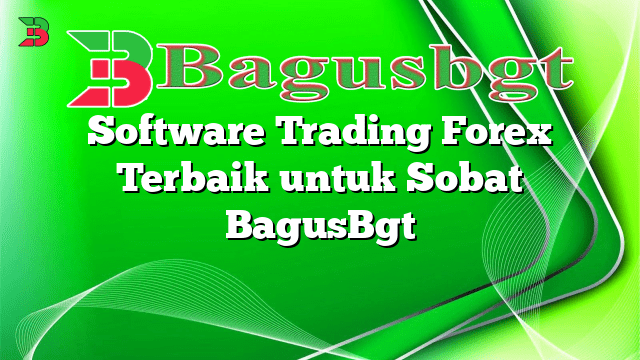Hello and welcome to our comprehensive guide on fundamental forex trading. In this article, we will delve into the intricacies of this trading strategy, exploring its advantages, disadvantages, and providing detailed explanations on various subtopics. So let’s get started!
1. Understanding Fundamental Forex Trading
Fundamental forex trading is a strategy that focuses on analyzing economic and political factors to determine the value of currencies. Unlike technical analysis, which relies on charts and patterns, fundamental analysis considers real-world events and their potential impact on currency prices.
By examining indicators such as interest rates, GDP growth, employment data, and geopolitical events, traders can make informed decisions about when to buy or sell currencies.
Advantages of Fundamental Forex Trading
One of the main advantages of fundamental forex trading is its long-term perspective. By analyzing macroeconomic trends, traders can identify major shifts in currency values and position themselves accordingly. This approach is particularly useful for investors who prefer a more stable and predictable trading environment.
Furthermore, fundamental analysis provides a deep understanding of market fundamentals, allowing traders to make informed decisions based on actual data rather than relying solely on technical indicators. This can lead to more accurate predictions and higher profits in the long run.
Disadvantages of Fundamental Forex Trading
While fundamental analysis offers valuable insights, it is not without its limitations. One major drawback is the time and effort required to gather and analyze relevant information. Monitoring economic indicators, political developments, and global events can be a time-consuming process, especially for individual traders without access to dedicated research teams.
Additionally, fundamental analysis alone may not provide timely entry and exit points for trades. Economic data releases and political events can cause sudden market fluctuations, making it challenging to execute trades at optimal prices.
2. Key Economic Indicators
When engaging in fundamental forex trading, it is essential to be familiar with key economic indicators. These indicators provide valuable insights into the health and performance of a country’s economy. Some of the most important indicators include:
| Indicator | Description |
|---|---|
| Gross Domestic Product (GDP) | Measures the total value of goods and services produced within a country’s borders. |
| Interest Rates | Determines the cost of borrowing and influences consumer spending and investment. |
| Inflation Rate | Indicates the rate at which prices for goods and services are rising. |
| Employment Data | Includes metrics such as unemployment rate, job creation, and wage growth. |
| Central Bank Policies | Decisions made by central banks regarding monetary policy, interest rates, and currency interventions. |
By monitoring these indicators and understanding their interplay, traders can gain insights into the future performance of a currency and make informed trading decisions.
3. Geopolitical Events
In addition to economic indicators, geopolitical events can significantly impact currency values. Political stability, trade agreements, and international conflicts can all influence the forex market. Traders must stay informed about these events and assess their potential consequences on currency prices.
For example, a country experiencing political turmoil or facing economic sanctions may see its currency depreciate. Conversely, positive developments such as trade agreements or peaceful resolutions to conflicts can lead to currency appreciation.
4. Using Fundamental Analysis in Forex Trading
Integrating fundamental analysis into your forex trading strategy involves several steps:
- Identify the relevant economic indicators and geopolitical events.
- Monitor the release of data and news related to these factors.
- Analyze the impact of the information on currency values.
- Make trading decisions based on your analysis.
- Implement risk management strategies to protect your positions.
By following these steps and continuously improving your understanding of fundamental analysis, you can enhance your trading skills and potentially increase your profitability.
5. Alternative Approaches
While fundamental analysis is a popular and widely used trading strategy, it is not the only approach to forex trading. Another common approach is technical analysis, which focuses on chart patterns, trends, and mathematical indicators to predict future price movements.
Technical analysis traders believe that historical price data can provide insights into future price movements, regardless of economic or political factors. They use tools such as moving averages, support and resistance levels, and oscillators to identify trading opportunities.
Both fundamental and technical analysis have their merits, and many traders combine elements from both approaches to make well-rounded trading decisions.
Frequently Asked Questions (FAQ)
Q: Can fundamental analysis be used for short-term trading?
A: While fundamental analysis is primarily associated with long-term trading, it can still provide valuable insights for short-term traders. By keeping an eye on important economic releases and geopolitical events, short-term traders can identify short-lived opportunities for profit.
Q: How often should I check economic indicators?
A: It is essential to stay up to date with economic indicators, but the frequency depends on your trading style. Swing traders may check indicators daily or weekly, while long-term investors may review them monthly or quarterly.
Q: Can fundamental analysis predict currency movements with 100% accuracy?
A: No trading strategy can guarantee 100% accuracy in predicting currency movements. Fundamental analysis provides valuable insights, but it is still subject to market uncertainties and unexpected events.
Conclusion
In conclusion, fundamental forex trading is a strategy that focuses on analyzing economic indicators and geopolitical events to predict currency movements. It offers several advantages, such as a long-term perspective and a deep understanding of market fundamentals. However, it also has limitations, including the time-consuming nature of gathering relevant information and the difficulty in timing trades.
By combining fundamental analysis with other trading strategies and staying informed about economic indicators and geopolitical events, traders can enhance their decision-making process and improve their chances of success in the forex market.
 Bagus Banget Kumpulan Informasi terbaru dari berbagai sumber yang terpercaya
Bagus Banget Kumpulan Informasi terbaru dari berbagai sumber yang terpercaya



